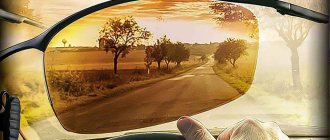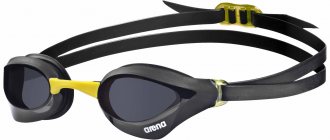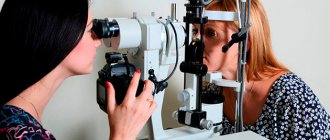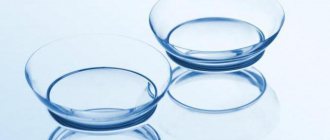History of glasses: how the first glasses appeared and who invented them
For many years now, glasses have firmly occupied a leading position among optical devices that, without any eye intervention, help a person improve poor vision and also protect from bright sunlight.
The history of glasses goes back centuries and goes back to the distant past. Glasses as a kind of optical device were invented in the thirteenth century, and in Ancient Rome, wealthy aristocrats already used faceted precious stones as an optical device through which they looked at the sun.
Not many people know that almost until the middle of the thirteenth century, glasses were something like polished small transparent pieces of glass and crystals. Also very interesting is the fact that they were made exclusively for one eye. A little later, pieces of glass began to be framed in special metal frames, and thus the first monocles were born.
Based on data from archaeological excavations, many ancient optical instruments were found in Ancient Greece and Rome. For example, during excavations at Troy on the island of Crete, archaeologists managed to find a unique optical lens made of rock crystal, which, according to scientists, was intended to improve vision.
The date of birth of glasses as an optical device is considered to be 1285. It was the date of this year that was on the document where references to glasses were first found. Since then, glasses have been used as a device for vision correction.
In addition, glasses became widely used in the fourteenth century, not only in Ancient Greece and Rome, but also in China, thanks to Arab and Persian merchants and traders who brought European goods to Asia.
Over the next few centuries, sunglasses became an integral part of the everyday life of people from the most remote corners of the globe, as they protected their eyes well from bright sunlight.
However, for quite a long time, glasses of this type were made only on individual orders for wealthy gentlemen. Mass production began only at the end of the eighteenth century.
Until the sixteenth century, glasses were kept on the nose thanks to a special spacer that resembled scissors in shape. This optical device was called pince-nez. This fastening was inconvenient, it often pinched the bridge of the nose, and the frame was very poorly fixed. Only at the end of the sixteenth century did they think of attaching strings to the frames of glasses, which were tied at the back of the head. This fastening kept the glasses on the face much better and did not allow them to constantly fall off the nose.
Soon, instead of strings, solid temples and nose pads were invented, and glasses acquired their modern look.
The advent of glasses was a very important event in the history of mankind. Glasses significantly helped a person feel like a full member of society, lead an active lifestyle, and also solved many everyday problems faced by people suffering from various visual impairments. And this became an incentive for the development and improvement of science and art in this area.
Glasses have given many talented people the opportunity to do what they love, create and develop, despite poor vision, while such a phenomenon as vision restoration was not even suspected.
The world's first GLASSES
Share this article:
The world's first glasses... Nobody knows the name of the great man who invented glasses. Historians and archaeologists have traced the evolution of this item, which is needed after forty by half of humanity, and by the age of fifty for each of us. The first lenses were found in Iran, then Persia. They are 4.5 thousand years old. Heinrich Schliemann found similar lenses during excavations in Troy; priests in Ancient Egypt were also familiar with them. These lenses were made from rock crystal, wrapped around the stone, and examined small details.
In Europe, glasses were first mentioned by Archimedes. He writes that the philosopher and mathematician Chrysip wore lenses made of rock crystal because he had poor vision.
Archimedes himself knew that a glass ball filled with water magnifies images and objects, but he believed that this was not a property of glass, but a property of water. We remember that Archimedes was her great admirer. In the Early Middle Ages, such balls were used to decorate shop windows and tavern decorations to make the served dish seem gigantic.
In the first century AD, Emperor Nero used a giant emerald to officiate at gladiator fights.
The famous year 1240 has arrived. We remember him from the invasion of the Mongols and the feat of Alexander Nevsky. And in Europe then a manuscript of the Arab mathematician Al Khazen with interesting drawings was found. He lived in 1038 and created these drawings around then.
In his writings he describes a rock crystal magnifying glass. Roger Bacon captured this idea and read it through his lens in the mid-13th century. Dark devices with quartz lenses were used by judges in the early Plantagenet era and in China so that their eyes could not be seen during the trial. But this cannot be called glasses. So, bone figurines with quartz inserts.
Meanwhile, the city-republics of Italy, famous for their glassblowers, began producing lenses. The pricing regulations of Venetian glassblowers in 1301 prohibited the use of other types of glass, but only rock crystal. Although it is believed that in 1284 Salvino Armati from Venice became the inventor of glasses, there are no documents on this topic. And since there are no documents, there is no inventor. And the first documentary evidence of the existence of glasses dates back to the Pisan monk Alessandro Spino in 1313. Be that as it may, historians still believe that it was the cardinal and philosopher, the smartest representative of his era, Nicholas of Cusa, who invented the first glasses in 1451. He created them to correct myopia and appeared in them before the nobility.
In the 17th century, pince-nez and monocles appeared. Alexey Mikhailovich Romanov once bought some kind of glasses with diopters in Italy. An interesting fact is that there was a “division of labor” between pince-nez and monocle: monocles were worn by diplomats and military personnel, and pince-nez by doctors, teachers and cultural figures. Pince-nez was considered less presentable and was used only for reading.
| Monocle - consists of a lens surrounded by a frame, and a chain is usually attached to it. The chain serves to secure the monocle to clothing so that the monocle does not get lost |
| A lorgnette is one of the types of glasses that differs from pince-nez and modern glasses in that it does not have a fixing device for the nose and ears: in other words, a lorgnette consists of two lenses with a frame and a handle. Was very fashionable in the 18th and 19th centuries. |
| Pince-nez - appeared in the 16th century. These are glasses that are held on the nose using a fixing device. The pince-nez does not have earpieces. |
| Glasses with temples - these consist of lenses made of plastic or glass, framed by a frame. Ear loops are attached to the frame. Sometimes, instead of arches, a strap or ribbon is inserted to go around the head. |
Appearing in public wearing pince-nez was considered bad manners. Even when translated, this word sounds unaesthetic: “compressed nose.” In the 18th century, the fashion for lorgnettes appeared. These are the ones they took with them to go out into the world.
In 1728, Englishman Edward Scarlett invented temples for glasses. But they were attached to the wig, and did not cling to the ears. This was done later, in the 18th century. Then Adams created the first lorgnette.
It was only in the 19th century that modern glasses with temples appeared, but lorgnettes and pince-nez were worn until the First World War.
How did sunglasses come about?
We figured out how glasses for vision correction were invented. But they are fundamentally different from sunscreens. Therefore, a new question arises: how did glasses appear, the task of which is to protect and protect the eyes from the harmful effects of sunlight?
To understand this, let's look at history. And you will learn that the first sunglasses were invented by the Eskimos. Somewhat strange, although if you delve into the essence of the issue, it becomes clear that there is nothing surprising in this. Indeed, in living conditions in a constant environment of snow, which glitters and prevents you from seeing anything, people need to somehow adapt to this. Therefore, for them, sunglasses are not a luxury or a beauty accessory, but a necessity.
Bone plates with slots are what the first sunglasses were. The history of the emergence of these optical instruments is a completely natural result of the survival and adaptation of people to a certain habitat.
How to choose corrective glasses with different diopters?
Any deviations in vision from the norm cause great discomfort, all “bespectacled people” who do not part with contact correction devices know this. Some defects can be corrected simply when the readings of the right and left eyes are the same. But if there is a difference in diopters, choosing glasses or lenses is a little more difficult.
Ophthalmologists note that if the difference in vision between the left and right eyes exceeds three diopters, choosing glasses for constant wear will be problematic. Many patients experience discomfort and malaise. Thus, users of glasses with different diopters often complain of headaches, eye strain and associated general weakness. And in this case, contact lenses will be the best option. In cases where the optical power of the right and left eyes does not differ much, doctors usually prescribe glasses with glasses with the same diopters, focusing on the lower value. With this selection option, the patient sees much better, and wearing corrective devices becomes more comfortable.
In any case, you should never choose glasses yourself. Only a competent optometrist, after a series of tests and hardware diagnostics, will be able to assess the quality of vision and write a prescription for glasses that will correct vision and be comfortable. Don’t be surprised if you see diopters in your prescription that differ from the actual optical power of your eyes: doctors always recommend wearing glasses with an optical power that is one or one and a half steps less. This is done in order to prevent the progression of the disease, be it myopia or farsightedness. If it comes to selecting glasses for astigmatism or correcting age-related farsightedness, then it is even more necessary to approach the issue very carefully and determine a number of additional parameters.
The question often arises as to why it is not possible to buy ready-made prescription glasses if the required dioptres are known. This is impossible to do, since it is also necessary to know the interpupillary distance. Experienced users also make one common mistake: they buy new glasses to replace old ones, using a prescription issued some time ago. This is also incorrect, since vision indicators change over the years, it can worsen and even improve if the patient is relatively young, follows the regime of wearing contact correction devices, and does eye exercises. Therefore, before purchasing a new pair, you should always double-check.
Glasses: history of appearance and selection rules
Glasses: history of appearance and rules of choice
Eyeglasses that correct vision are an indispensable accessory not only for health, but also for human beauty due to the variety of frame shapes. How to choose them correctly?
glasses, vision, astigmatism, myopia, disease prevention
The eyes are aptly and insightfully called the mirror of the soul. Even if these eyes are not very accurate and not very keen. It’s just that in this case, the “mirror” needs a special “frame”, or rather, a frame. It’s not for nothing that the words “eyes” and “glasses” are so similar. And in our time, the latter can be not only a complement, but also a decoration of the former. The distant ancestors of today’s “bespectacled people” could only dream of this: regardless of the quality of their vision, they were forced to look at the world with the naked eye.
Those who wear glasses have higher intelligence. The traditional attitude towards people who wear glasses as being more intelligent has unexpectedly found its confirmation. American ophthalmologists examined 1,500 people aged 15–60 years suffering from myopia and farsightedness. Studies have shown that 80% of people with glasses have a higher IQ than their peers with normal vision.
What interesting things can you say about glasses?
This seemingly simple accessory has a fairly rich history, which is associated with many historical figures.
When were glasses invented?
The Arabs are considered the first inventors. The remedy was elementary and completely different from what we are used to seeing. The Arab scientist Ibn al-Haytham described the structure of the eye and its ability to see better using a spherical piece of glass or translucent stone.
But in the version in which we are accustomed to seeing them, the first, according to the Pisans, was invented by the monk Alessandro della Spina in the 13th–14th centuries . The Florentines, in turn, claim that the first was the monk Salvino d'Armato during the same time period. They were originally intended for people with farsightedness.
Glasses for myopia were invented already in the 16th century. Historians compare this event with the invention of printing and the spread of literacy. The expensive accessory was first worn by the ruling circles: kings, electors, popes. In the seventeenth century they were brought to Russia: they were used by Patriarch Nikon and Tsars Mikhail Fedorovich and Alexei Mikhailovich.
It is noteworthy that at first they were fastened with an elastic band , and in the 18th century Edward Scarlett invented the bows that we use to this day.
There's always a first time for everything. Not only love, dental fillings and higher education, but also... glasses. True, their appearance in my purse does not make me happy at all. I can get along just fine without them, but it’s still time to buy extra small print for reading... How does a “book person” console himself? That's right, examples from literature. Are there not many heroic characters with glasses? Haven’t glasses and their various ancestors turned into amazing artifacts in books? After all, isn’t the “magic crystal” itself, the poetic imagination, a relative of glasses? Four-Eyed Portraits
Out of curiosity, let’s look through the encyclopedic dictionary “Thoughts and Asylums of Belarus”.
Here, wearing glasses with thin metal frames, is Alexander Askerko, a liberal, participant in the 1863 uprising. Wearing the same ones, but with a dark frame, is another rebel, Zigmund Vrublevsky. The archaeologist Xenophon Gavorsky, who explored the Polotsk burial mounds in the middle of the last century, wore glasses with oval lenses, just like the composer Stanislav Moniuszko. Biologist-naturalist Alexander Kovalevsky, a follower of Darwin, has “second eyes” of a more round shape, and the arms are attached in a strange way, as if the glasses are upside down. Almost the same ones decorate the appearance of Yanka Luchina, a poet from Minsk. Surgeon Joseph Korzhanevsky from Slutsk wore glasses with light, shiny metal frames with very small lenses, and archaeologist Alexey Sapunov wore pince-nez. Many scientists have poor eyesight. Sapunov, for example, became completely blind in his old age. But already in the 17th century we had Salome Rusetskaya, an adventurer and an outstanding ophthalmologist, who treated both the Russian empress and the wives of the Turkish sultan for eye diseases. What do glasses represent in literature? From the lens to the pince-nez
Writers immersed in the era of Nero did not fail to notice how the cruel emperor looked at gladiatorial battles through emerald.
However, scientists recently gained access to the Nero lens, stored in the Vatican, and discovered that it is in fact chrysolite. By the way, this is consistent with the story about the wizard of the Emerald City, by whose order all townspeople must wear green glasses, which are also equipped with a lock on the back of the head so that they cannot be removed. Why such sadism? So that no one would notice that the emeralds that adorned the capital had long been replaced by glass. In Umberto Eco's novel The Name of the Rose, a medieval monk also uses a lens to read. Improving vision with polished glasses is an ancient science; the first image of glasses is considered to be a fresco from 1552, painted in the church of the Italian city of Treviso by the monk Tommaso da Modena. Glasses also appear in Urszuli Radziwill's first comedy, Dascipnae Kahanne, staged in 1746 in Alba, the Radziwills' country residence near Nesvizh. They are worn by the wealthy Egyptian shepherd Lucidor, who is concerned about ensuring the piety of his daughters. But the poor guy’s glasses don’t help; it all ends in two sudden weddings. Let's also remember lorgnettes - lenses on a long handle (Eugene Onegin and his company happily lorgnated ballerinas from the theater box), monocles (a lens inserted into the eye socket, with a chain), pince-nez - the same glasses, but without arms... We meet lorgnettes in the play “Tuteishya” by Yanka Kupala. It is through such a device that the learned lady who came to study the curious ethnographic type examines Mikita Znosak: “Lady (looking at Mikita Znosak). What is it about you, monsieur, for such an original fight? Remind yourself of the form a la kum pažarny.” Pince-nez is an accessory of Kisa Vorobyaninov: “He didn’t wear glasses. One day, having decided that wearing pince-nez was unhygienic, Ippolit Matveevich went to the optician and bought rimless glasses with gold-plated shafts. He liked the glasses the first time, but his wife (this was not long before her death) found that with glasses he looked like Miliukov, and he gave the glasses to the janitor.” The pince-nez is used by Hercule Poirot, a brilliant detective, a product of Agatha Christie's imagination. In pince-nez, which is also cracked, Koroviev from Woland’s retinue walks around on the pages of the novel “The Master and Margarita”. Osorgin has a story “Pince-nez”, and Conan Doyle has a story “Pince-nez in a Gold Frame”. Sherlock Holmes uses this evidence to find the criminal. Of course, the most famous “literary bespectacled man” today is Harry Potter. But we can also remember Pierre Bezukhov and Karenin, no less significant characters in world literature. By the way, there are very beautiful glasses in the story “The Dzikae Palyavanne of Karal Stakh” by Vladimir Korotkevich. Their owner is the main villain of the plot, the colorful nobleman Dubatovk: “Yon vytsyagnuu vyalikiya srebnye sharks, khustka, which is laid out on the knees, grazing the key and only grazing the getag klaptsik paper. Aculars are not, however, necessary to read.” Isn’t it an interesting artistic detail - it emphasizes that in fact the hero is not as “dense” as he wants to seem, and his hypocrisy: he takes out glasses, but reads without them. Hat, tie and glasses
Of course, they are an attribute of a scientist, like Znayka from a children’s fairy tale, Paganel from “The Children of Captain Grant” or Alexander Privalov, an aspiring magician from “Monday Begins on Saturday” by the Strugatskys: “You have a higher education, and glasses , and you’ve grown a beard, but you can’t understand such a simple theorem.”
The glasses are worn by the hero of the novel “To Kill a Mockingbird” by the American writer Harper Lee, lawyer Atticus Finch, who had the opportunity to defend a falsely accused black man in court and confront the racism of an entire city. Even the Solaris astronaut keeps his glasses on the table in his cabin on the alien station. The hero of “99 Francs” by Beigbeder, a cynical advertiser, is also bespectacled. The villain hides his gaze
It happens that glasses are made a symbol of deception.
Remember, the invisible man wore “tinned glasses” to hide the fact that behind them his eyes were not visible at all. Koroviev’s cracked pince-nez glitters deceptively, and the pseudo-blind cat Basilio wears black glasses. The poet of the 1930s Rygor Kazak is upset that his beloved is wearing sunglasses: She put eyeglasses on her nose,
and your eyes were stolen.
I like the people of Mastsa are strangers,
Only it is possible to pas vusnakh paznats.
Here Olga from Ivan Shamyakin’s novel “Gandlyarka i paet” redeems a Red Army soldier from fascist captivity: “The German’s eyes burned.
Grabbed the gold, thrown and the French, which hangs on the backs of the chair, gives the teeming sharks, the soul of the eyes, without laughter and words, looking at the chyrvontsy.” To make it cooler
Sometimes glasses are fashion.
Like Monsieur Triquet, the character from Eugene Onegin, who came to the Larins’ ball: “a witty guy, recently from Tambov, with glasses and a red wig.” Our contemporary Sumire from “My Beloved Sputnik” by Haruki Murakami “seriously agonized over how she could become like Kerouac’s heroes, be as wild, cool - wild, cool - and so that all this would be “over the edge.” She walked with her hands in her pockets, her hair deliberately disheveled and sticking out in different directions. She wore glasses with black plastic frames, like Dizzy Gillespie’s, although she had quite decent vision, and looked absently at the sky.” The little hero of Agnia Barto’s poem “Glasses” is so jealous of his older brother, who was given them, that he pretends to be nearsighted. Wise or weak
Glasses are a symbol of mature wisdom, like the headmaster of the school of wizardry Albus Dumbledore and Tom Sawyer's aunt.
However, sometimes heroes do not come to terms with the evidence of their age, like the actress Julia from Maugham’s novel “Theater”: she needed glasses, but she basically did not wear them in public. Another hero of the story from the century before last was also embarrassed to wear eyepieces. As a result, he mistook an old woman for a young girl, to whom he proposed. Glasses are a symbol of the hero’s fragility and vulnerability. “Ira had a wok, I tsyaper Yana wore sharks, like an old grandmother. I'm all running, sniffing and crushing. And the little one herself is skinny. So Yurka Tata will invent that Yana is a retired mouse” - this is from Yanka Bryl’s story “Tuga”. Glasses are worn by Piggy from Golding's Lord of the Flies, second lieutenant Romashov from Kuprin's The Duel, the hero of Knut Hamsun's novel Hunger... The carpenter Giuseppe, who carved Pinocchio from logs, has glasses wrapped with string. The old man in Yakub Kolas’s parable “Kazhukh old man Anisima” is probably the same - the hero endlessly repairs the casing, not realizing that it’s high time to sew a new one. Artifact with a piece of glass
Glasses can be a magical object in themselves, as in Andersen's fairy tale. From the Belarusian writer Gennady Avlasenko, a girl finds magic glasses on the train that show the essence of a person and his secret desires. And in the story by Valery Gapeev, they become an instrument of punishment - an evil teacher hits them on the head of an unintelligent student. Belarusian playwright Ledenev wrote the play “Glasses” about the auction of the mentioned item belonging to John Lennon. Finally, I found the most interesting example of the use of the word “glasses” in the memoirs of the Belarusian publisher Vlasov. Vilna at the beginning of the last century. A guy who was nicknamed Bearded got a job at Nasha Niva, “he looked like a clerk who wrote hundreds of letters. Write day, friends, traditions... Have a rest and work... I've finished with well-fed creatures, aka, spent a couple of months, pabyaleў, and my nerves, like a violin, got better. But the thought and the cold work on the lungs.” Bearded was sentenced to 10 years of exile in Siberia for belonging to the Social Revolutionary Party, and Vlasov writes: “Then we grazed the pit - the contributors to the book “Aculars”, G.Z. false pavement, and Sibira has a great desire for everything.” In general, we are not supermen, so that just by putting on simple glasses we can change completely. And the text, no matter what devices you use to read it, remains the same.
Soviet Belarus No. 81 (24218). Friday, May 3, 2013.
Lyudmila RUBLEVSKAYA
LiveInternetLiveInternet
Quote from Parashutov's message
Read in full In your quotation book or community!
GLASSES IN PAINTING (PART 3 - EXCURSION INTO HISTORY) From history it is known that glasses were invented in the 13th century. It is believed, however, that “in the first half of the 11th century, the Arab scientist Ibn al-Haytham described a magnifying lens, but the East was unable to draw any practical conclusions from his theoretical developments.” In the West, the great scientist and thinker Roger Bacon was the first to try to carve eye lenses in 1267. But early experiments ended in failure. Nevertheless, information about the great discovery instantly spread throughout the Christian world: the increasing power of “crystalline stones” becomes a literary metaphor; on the portal of one church in Spain, Saint Jerome, who lived seven centuries before the invention, is depicted with such optical stones! Lionello Spada St. Jerome 1610s And yet the first real glasses were born at the very end of the 13th century in Northern Italy. It is unknown who owns the honor of making them. It was believed that this was Salvinio degli Armati, buried in the Cathedral of Santa Maria Maggiore in Florence (at least that is what is written on his tomb). However, recent research has proven that the epitaph is a fake. Be that as it may, in 1300 the Great Council of the Venetian Republic adopted the first statute regulating the production of “reading stones”. And in 1305, the Dominican Giordano de Rivalto from Pisa already mentioned “eyeglasses for reading.” In general, the 14th century became the time of widespread adoption of glasses in the form of a monocle and lorgnette. And the earliest surviving copy dates back to the middle of this century - it was found under the choir of the Windhausen monastery in Lower Saxony. At this time, the nose bridge was also invented. So, glasses were invented no earlier than the 13th century, and came into widespread use only in the 14th century. The originals of the earliest glasses have not survived to this day. However, a historically short time after their invention in the second half of the 13th century, glasses began to appear on the faces of characters in frescoes and miniatures in manuscripts. The very first image of glasses is attributed to Tomaso Da Modena - on a fresco of 1352 he painted a portrait of Cardinal Hugo of Provence, writing, with glasses (pince-nez) on his nose. Tommaso da Modena Ritratti di somenicani Ugo di Provenza 1352 San Niccoli, Sala del Capitolo, Treviso Twenty years earlier, in 1332, the same artist depicted in a fresco Cardinal Nicholas of Rouen reading a book through a monocle. Tommaso da Modena Ritratti di somenicani Cardinale di Rouen 1332 San Niccoli Sala del Capitolo, Treviso Both frescoes decorate the Church of San Niccolo in Treviso, Italy. Based on such historical evidence, 20th-century craftsmen reconstructed the very first glasses. These earliest examples of the 14th and 15th centuries, made in Italy, France and Germany, demonstrate that glasses at the beginning of their history were, although rough, but already full of charm. Structurally, the very first glasses consisted of two monocles, the handles of which were connected by a pin. These glasses were placed on the nose and held there due to friction in the hinge joint. It should be noted that in the 14th-15th centuries there were only glasses for farsighted people; glasses for myopia would appear only a century later. In the fifteenth century, wire bows were also invented to tuck behind the ears. Thus, in the 15th century, glasses acquired an almost modern look - St. Anna in a painting from 1470 from the Amsterdam Museum. (I looked through a lot of Saint Annes on the Internet, but I couldn’t find a saint with glasses!) Among the medieval bespectacled characters we can include the character on the altar made by the German Conrad von Soest (born around 1370 in Dortmund, died after 1422) for the Church of St. Nicholas in Bad Wildungen in 1404. Conrad von Soest Passionsaltar (Wildungen-Altar), Gesamtansichtl 1403 Stadtkirche St. Nikolaus Bad Wildungen Conrad von Soest Passionsaltar (Fragment) 1403 Stadtkirche St. Nikolaus Bad Wildungen The biblical Jacob wearing glasses is depicted in an ancient miniature from the “World Chronicle” by Hartmann Schedel (February 13, 1440 - November 28, 1514). Jacob is an ancient miniature from the “World Chronicle” by Hartmann Schedel. The Flemish early Renaissance painter Jan van Eyck (circa 1385 or 1390-1441) in his painting “Madonna of Canon Georg van der Paele” depicts Mary and Child enthroned in a Romanesque church, surrounded by Saints Donatian and Saint George, presenting her old canon. Jan van Eyck Madonna des Canonikus Georg van der Paele 1436 Jan van Eyck Madonna of Canon Georg van der Paele 1436 Art Gallery, Bruges Saint Donatian holds glasses in his hands. Jan van Eyck Madonna des Kanonikus Georg van der Paele (fragment) 1436 Jan van Eyck Madonna of Canon Georg van der Paele (fragment) 1436 Art Gallery, Bruges Raphael, Simon Bening and El Greco also depicted glasses on their canvases. Raphael Portrait of Pope Leo X and Two Cardinals 1518-19 Simon Bening Self-Portrait 1558 El Greco Portrait of a Cardinal 1600 In addition, reproductions of people wearing glasses by medieval masters have been found on the Internet, but, as often happens, without a single word of attribution - no author, no year, no place location. From the source I quote, it is only clear that the paintings (most likely frescoes) depict the evangelist and apostle Peter reading a book. Evangelist with glasses. Apostle Peter reading a book. There is also a lithograph from 1690 called “The Glasses Seller.” Lithograph “Seller of Glasses” 1690 Sources – Wikipedia, chronologia.org and www.interoptika.ru.
Series of messages “Glasses”:
Part 1 — GLASSES IN PAINTING (PART 1 — VIVAT, GLASSES WITH GLASSES!) Part 2 — GLASSES IN PAINTING (PART 2 — “GRANDMOTHER’S EYES”) Part 3 — GLASSES IN PAINTING (PART 3 — AN EXCURSION INTO HISTORY) Part 4 — GLASSES IN PAINTING (PART 4 — ARTISTS WITH GLASSES) Part 5 — GLASSES IN PAINTING (PART 5 — NEW GALLERY OF GLASSES WITH GLASSES) Part 6 — GLASSES IN PAINTING (PART 7 — GRANDMOTHER’S GLASSES. NEW GALLERY.) Part 7 — GLASSES B PAINTINGS (PART 8 - PORTRAITS OF PEOPLE WITH GLASSES. CONTINUATION OF THE TOPIC.)
History of the invention of glasses
Lenses very similar to those built into glasses were found in Egypt during excavations of the tombs of the pharaohs. However, it is not known for certain whether the Egyptians used lenses to correct their vision.
Therefore, it is believed that the first glasses were created in Venice around the 13th century. People had just discovered a new technology - creating thin and transparent glass, and rushed to try to use it to improve vision. And it worked!











